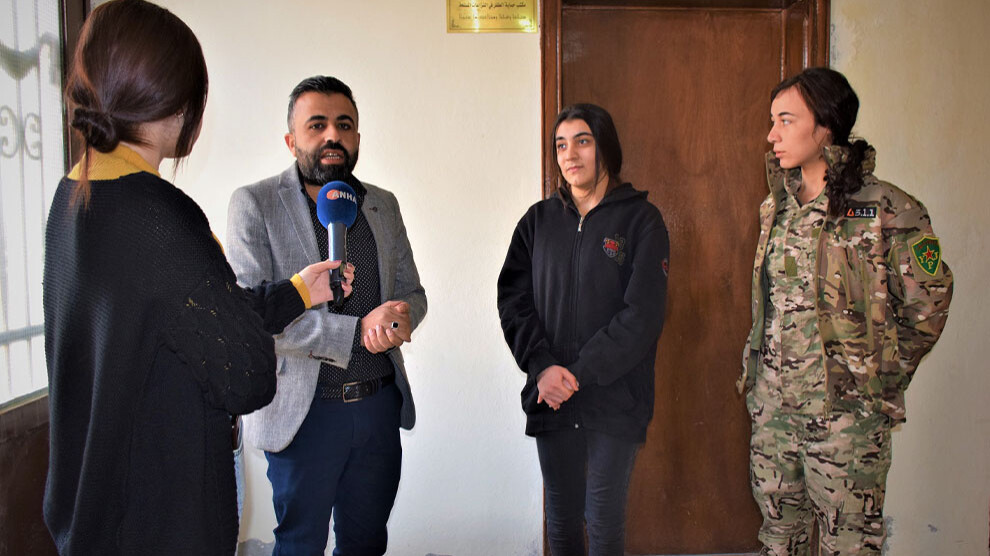The Syrian Democratic Forces (QSD) handed over one of their ranks to the Office for the Protection of Children in Armed Conflict in Hesekê. The sixteen-year-old is now being returned to her parents’ home under the agreement between the United Nations (UN) and the QSD. The youth was received on Saturday by the lawyer Khaled al-Jabr, who is also a member of the civil council of Hesekê. She was accompanied by the QSD commander Dilara Hesekê.
The “Agreement to End the Recruitment of Child Soldiers and Prevent the Exploitation of Children in Armed Conflicts” was signed in June 2019. It was signed by Virginia Gamba, the UN special envoy for children in armed conflict, and the QSD general commander Mazlum Abdi in Geneva, Switzerland. On the basis of the protocol, several offices for the protection of children from war were opened in the various regions of the northeast Syrian autonomous territories. These offices are in close coordination with UNICEF and the QSD and explicitly serve to prevent minors from being taken under arms. The first results have already been recorded: More than eighty boys and girls under the age of 18 who were active in the armed forces have been identified and handed over to their families.
In contrast to Western European armies, such as the Bundeswehr, the age of joining the military self-defense forces in Northern and Eastern Syria is at least 18 years, sometimes even 21 years. However, there is also a problem of minors under arms here. This results from several problems. In acute self-defense situations, such as when the terrorist organization “Islamic State” (IS) invaded Kobanê, the entire population, including minors, took up arms out of the need to protect their acute survival.
Again and again girls flee to the women’s defense units because of forced marriage or violence in the family. Although the self-government as well as the QSD and all forces organized in it have paid great attention to the age of majority of their fighters for years, this problem arose again and again and the organizations implemented new control mechanisms to minimize the problem. However, through the women’s movement in northern and eastern Syria, effective mechanisms now exist to combat forced marriage or violence in the family and to cope with the “refugee movement” of minors in military units in civil society engagement.
–

